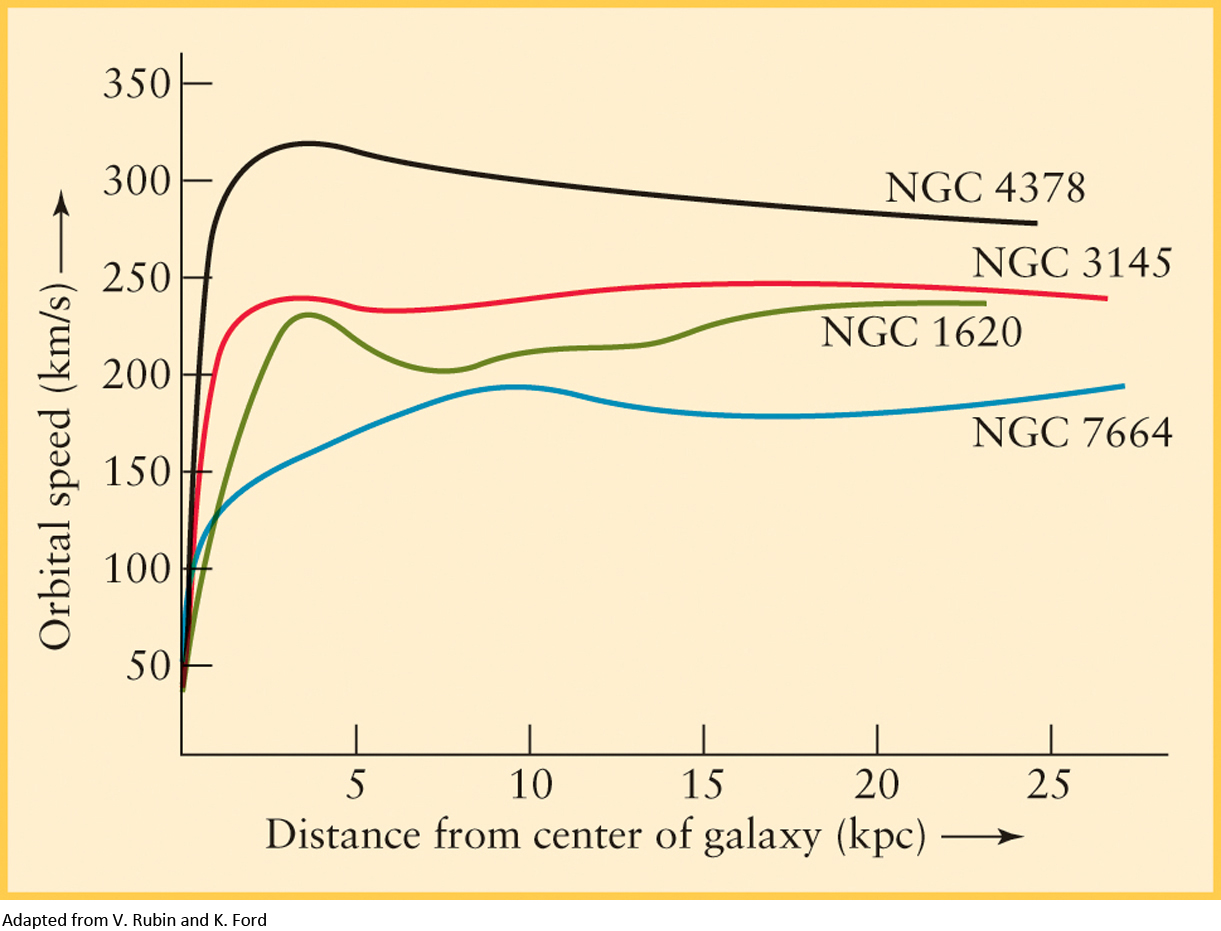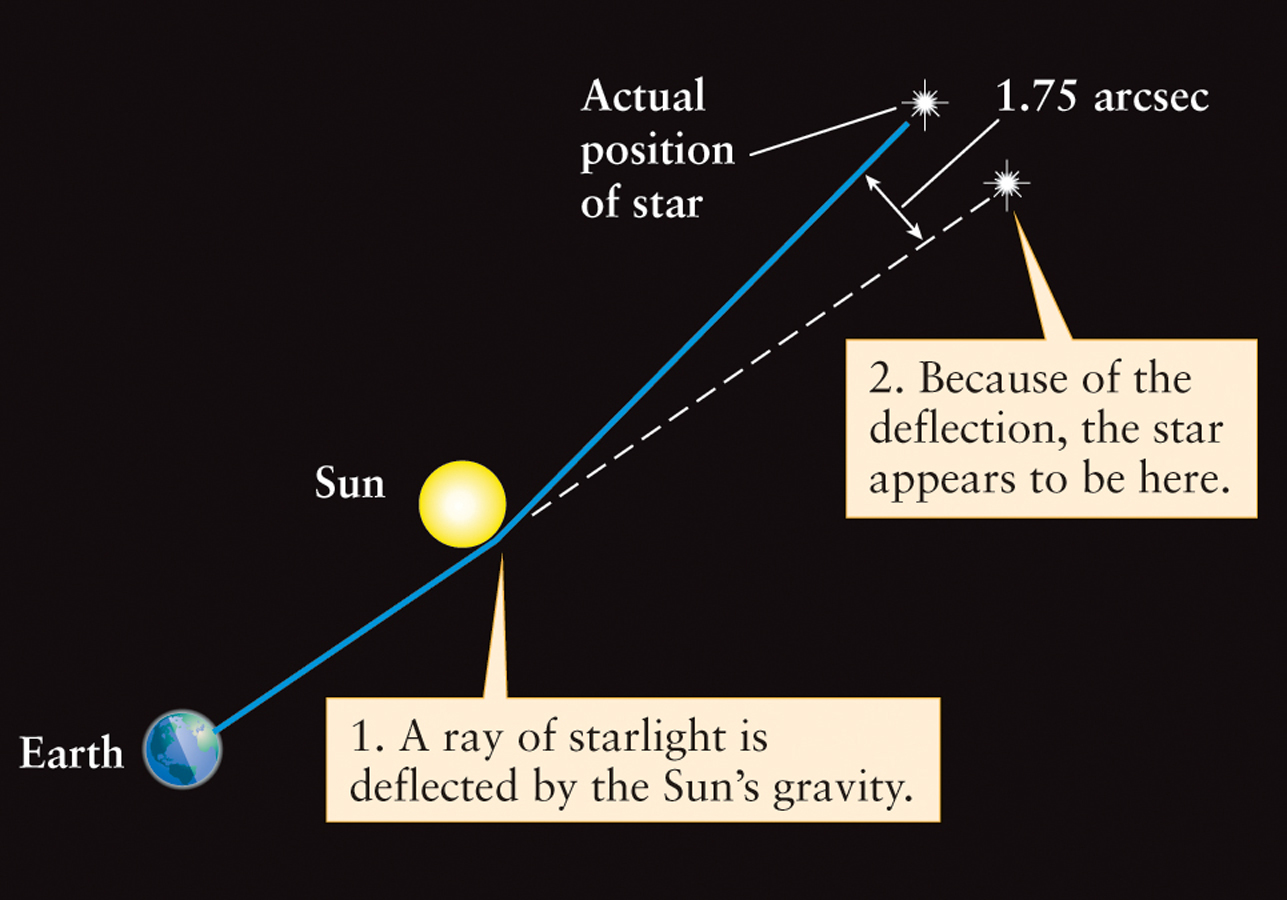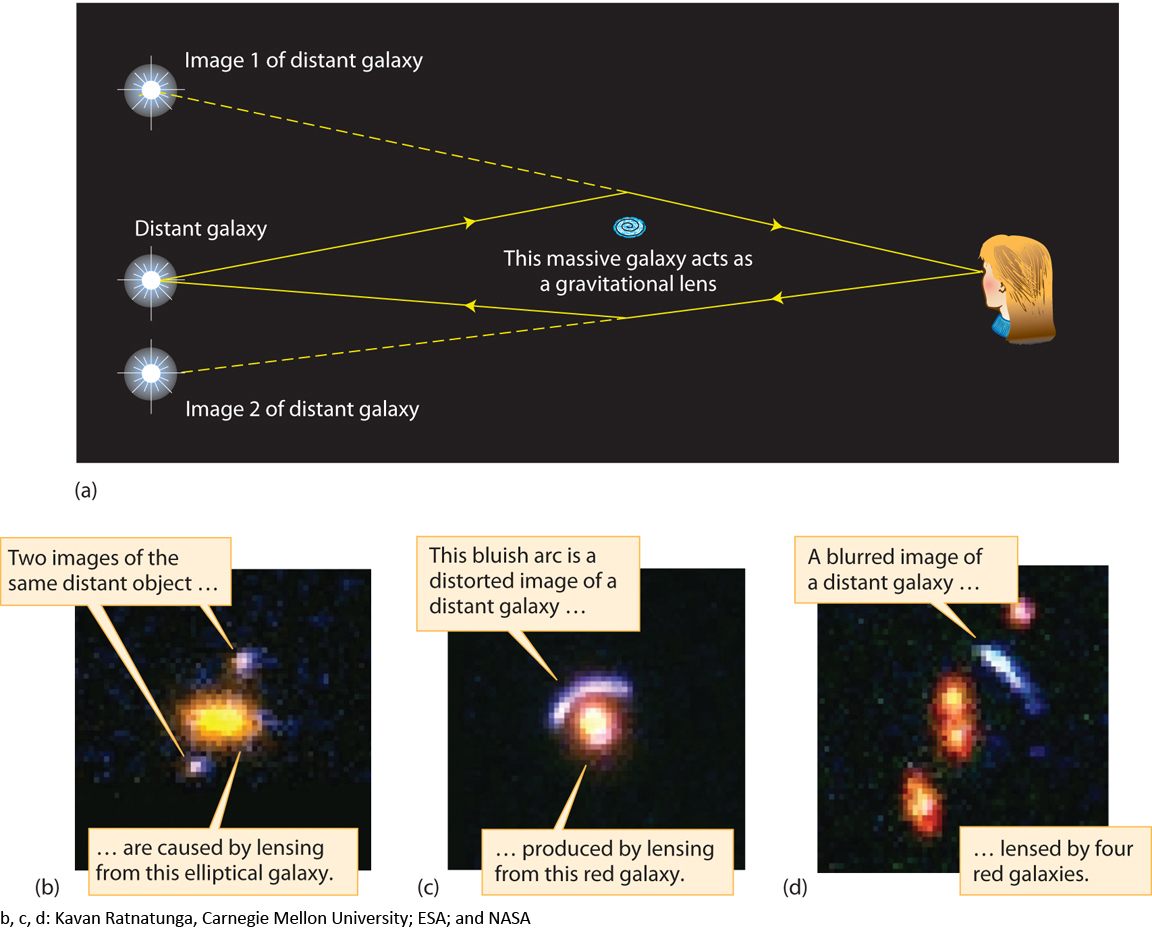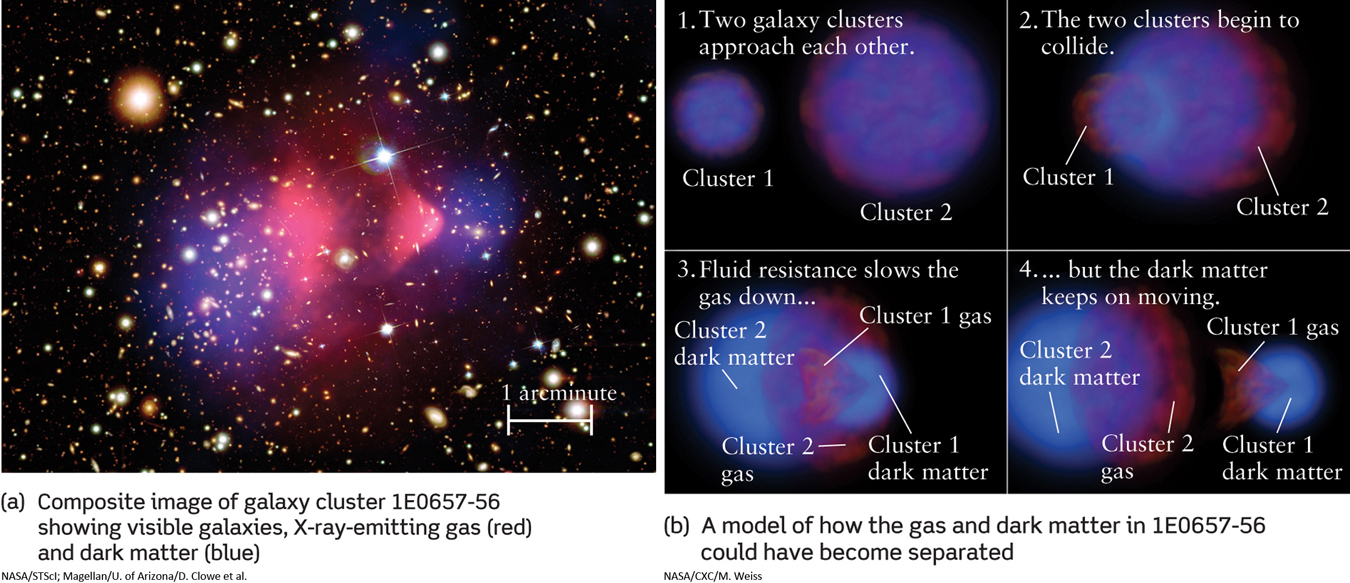14-6 Dark matter can be inferred by observing the motions of galaxy clusters
A cluster of galaxies must be held together by gravity. In other words, there must be enough matter in the cluster to prevent the galaxies from wandering away. Nevertheless, careful examination of a rich cluster, like the Coma cluster shown in Figure 14-17, reveals that the mass of the visually luminous matter (principally the stars in the galaxies) is not at all sufficient to bind the cluster gravitationally. The observed line-of-sight speeds of the galaxies, measured by Doppler shifts, are so large that the cluster should have broken apart long ago. Considerably more mass than is visible is needed to keep the galaxies bound in orbit about the center of the cluster.
We encountered a similar situation in studying our Milky Way Galaxy in the previous chapter: The total mass of our Galaxy is more than the amount of visible mass. As for our Galaxy, we conclude that clusters of galaxies must contain significant amounts of nonluminous dark matter. If this dark matter were not there, the galaxies would have long ago dispersed in random directions and the cluster would no longer exist today. Analyses demonstrate that the total mass needed to bind a typical densely packed galaxy cluster is about 10 times greater than the mass of material that shows up on visible-light images.
Evidence from Rotation Curves and Gravitational Lensing
As for our Galaxy, the problem is to determine what form the invisible mass takes. A partial solution to this dark-matter problem, which dates from the 1930s, was provided by the discovery in the late 1970s of hot, X-ray–emitting gas within clusters of galaxies (see Figure 14-21a). By measuring the amount of X-ray emission, astronomers find that the total mass of intracluster gas in a typical rich cluster can be greater than the combined mass of all the stars in all the cluster’s galaxies. But this is sufficient to account for only about 10% of the invisible mass. The remainder is dark matter of unknown composition.
Although we do not know what dark matter is made of, it is possible to investigate how dark matter is distributed in galaxies and clusters of galaxies. It appears that dark matter lies within and immediately surrounding galaxies, but is not in the vast spaces between galaxies. The evidence for this comes principally from observations of the rotation curves of galaxies and of the gravitational bending of light by clusters of galaxies.
As we saw in the last chapter, a rotation curve is a graph that shows how fast stars in a galaxy are moving at different distances from that galaxy’s center. As Figure 14-25 illustrates, many other spiral galaxies have similar rotation curves that remain remarkably flat out to surprisingly great distances from each galaxy’s center. In other words, the orbital speed of the stars remains roughly constant out to the visible edges of these galaxies.

This observation tells us that we still have not detected the true edges of these galaxies (and many similar ones). Near the true edge of a galaxy, we should see a decline in orbital speed. Because this decline has not been observed, astronomers conclude that there must be a considerable amount of dark material that extends well beyond the visible portion of the disk.
Further evidence about how dark matter is distributed comes from the gravitational bending of light rays. As Figure 14-26 shows, the gravity of a single star like the Sun can deflect light by only a few arcseconds. But a more massive object such as a galaxy can produce much greater deflections, and the amount of this deflection can be used to determine the galaxy’s mass. For example, suppose that Earth, a massive galaxy, and a background light source (such as a more distant galaxy) are in nearly perfect alignment, as sketched in Figure 14-27a. Because of the warped space around the massive galaxy, light from the background source curves around the galaxy as it heads toward us. As a result, light rays can travel along two paths from the background source to us here on Earth. Thus, we should see two images of the background source.
345


A powerful source of gravity that distorts background images is called a gravitational lens. For gravitational lensing to work, the alignment between Earth, the massive galaxy, and a remote background light source must be almost perfect. Without nearly perfect alignment, the second image of the background star is too faint to be noticeable.
Most of the mass within a galaxy emits no light and is of unknown composition.
Beginning in 1979, astronomers have discovered a great number of examples of gravitational lensing. The example shown in Figure 14-27b is almost exactly like the ideal situation depicted in Figure 14-27a. If the alignment is very slightly off, the image of the distant galaxy is distorted into an arc, as shown in Figure 14-27c. Figure 14-27d shows a more complicated example of lensing that results when the gravitational lens is not one but several massive galaxies.
By measuring the distortion of the images of such background galaxies, J. Anthony Tyson of Bell Laboratories and his colleagues have determined that dark matter, which constitutes about 90% of the cluster’s mass, is distributed much like the visible matter in the cluster. In other words, the overall arrangement of visible galaxies seems to trace the location of dark matter.
Many proposals have been made to explain the nature of dark matter. One reasonable suggestion was that clusters might contain a large number of faint, red, low-mass (0.2 M⊙ or less) stars. These faint stars could be located in extended halos surrounding individual galaxies or scattered throughout the spaces between the galaxies of a cluster. They would have escaped detection because their luminosity and hence apparent brightness would be very low. Searches for these stars around other galaxies as well as around the Milky Way have been carried out using the Hubble Space Telescope. None has yet been detected, so it is thought that faint stars are unlikely to constitute the majority of the dark matter in the universe.
346
An important clue about the nature of dark matter was discovered in 2006 by examining a rich cluster of galaxies called 1E0657-56. Remarkably, the visible matter and dark matter in this cluster do not have the same distribution (Figure 14-28a). The best explanation for how this could have come about is that 1E0657-56 is the result of a collision between two galaxy clusters, one larger than the other (Figure 14-28b). During the collision, the gas from one cluster slams into the gas from the other cluster and slows down due to fluid resistance. (You feel the force of fluid resistance pushing against you whenever you try to move through a liquid or gas—for example, when you swim in a lake or put your hand outside the window of a fast-moving car.) Fluid resistance is a consequence of the electric forces between adjacent atoms and molecules in a fluid. But if dark matter is made up of some curious material that responds only to gravitational forces, it is unaffected by fluid resistance. As a result, during the collision sketched in Figure 14-28b the gas is slowed by fluid resistance but the dark matter is not. The agreement of the simulation in Figure 14-28b with the observations in Figure 14-28a strongly reinforces the idea that dark matter, though mysterious, is quite real.

Question
ConceptCheck 14-14: If dark matter cannot be seen, what are the two primary lines of evidence that it exists?